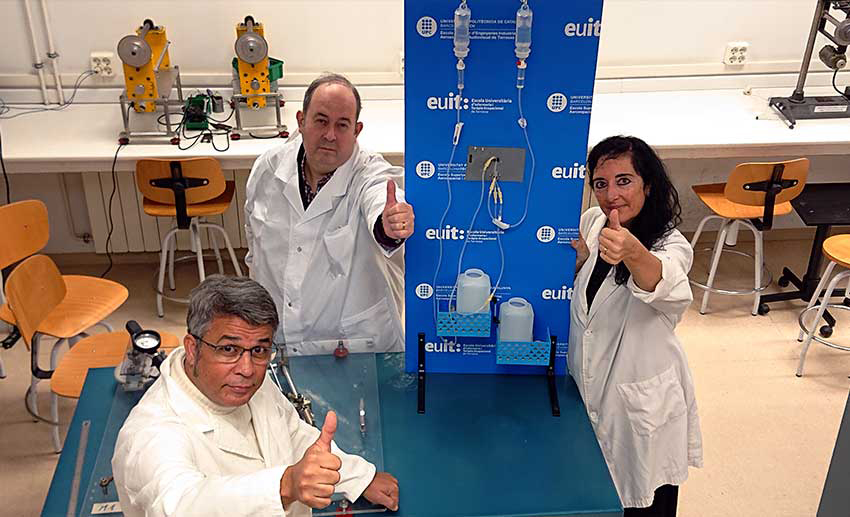
New tests and computer simulation methodologies for electric vehicle chassis weight reduction
March 16, 2021
VIDA: smart ventilation to detect the level of purification of indoor air
April 6, 2021A multidisciplinary group of researchers from CATMech has developed and patented an electromechanical system that automatically purges and cleans the tubes of intravenous serum therapy equipment to remove the drug that has been left in them and prevent infra-medication due to residual drug in the tubes.

An exhaustive study of seven Catalan hospitals and 170 patients who were administered paracetamol intravenously revealed that, in all the cases analysed, the perfusion stopped and it was considered completed without purging the drugs that were left in the tubes of the system. The average amount of residual drug that did not reach the patient was 12.65 cc: an amount that represents a waste of one in eight doses administered. The study found that almost 40% of patients had re-occurrence of pain or fever four hours after having received the dose of paracetamol intravenously.
The key to this innovation lies in the positioning of another bottle of physiological serum connected in the form of a Y to the same tube in which the drug was administered, with an optical sensor installed in the drip device. The sensor is activated once the drug has run out and sends a signal to a two-way solenoid valve. The solenoid valve closes the tube that the drug goes down and opens a tube connected to the bottle of physiological serum. In this way, the physiological serum purges for a few seconds the drug remaining in the tube that has just been administered to the patient.
Related Projects
- A team from the Bioinspired Oral Biomaterials and Interfaces (BOBI) research group at the Department of Materials Science and Engineering (CEM) of the Universitat Politècnica de Catalunya - BarcelonaTech (UPC) is taking part in the European project HYDROHEAL, which explores how to transform bone fracture treatment using smart and advanced biomaterials, aiming to reduce the risk of infection and implant rejection, as well as shortening fracture recovery times.
- Neurodegenerative diseases, such as Parkinson's disease, Alzheimer's, and age-related disorders, have been widely studied due to their significant impact on individuals and society. So far, these are incurable and debilitating diseases that lead to progressive degeneration and death of nerve cells, resulting in cognitive and mobility impairments. Tremors, mainly at rest, slowness of movement (bradykinesia), limb rigidity, and issues with gait and balance are typical motor disorders related to Parkinson’s disease. Additionally, due to progressive muscle atrophy, these issues can lead to falls, which in turn result in further complications and risks to quality of life.
- The Biomaterials, Biomechanics, and Tissue Engineering (BBT) Research Group at the Institute for Health Research and Innovation (IRIS) of the Universitat Politècnica de Catalunya – BarcelonaTech (UPC) is leading DYNAMIC, a project aimed at creating multifunctional, stimuli-responsive biomaterials that not only promote bone regeneration but also intelligently and effectively combat bacterial infections.
- 30/09/2024Project Headerrightno-repeat;left top;;auto20px A team from the Centre for Research in Biomedical Engineering (CREB) of the UPC and Sant Joan de Déu has created a new […]




